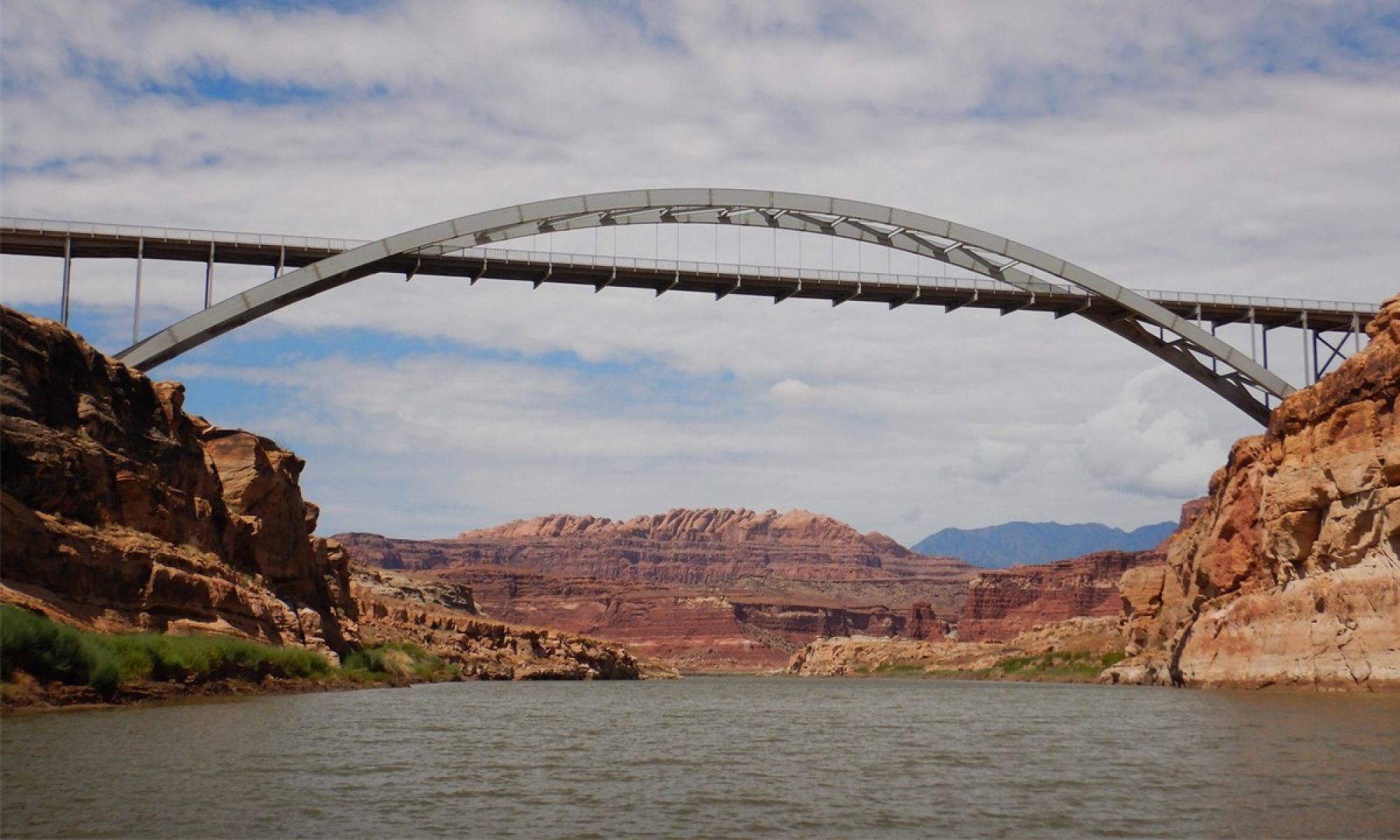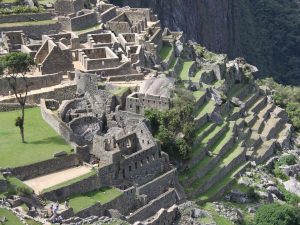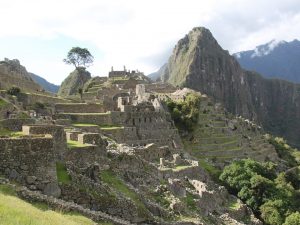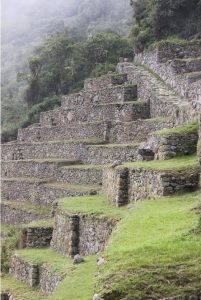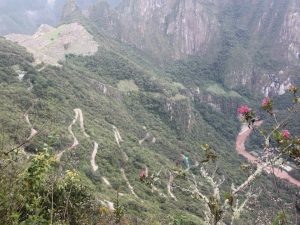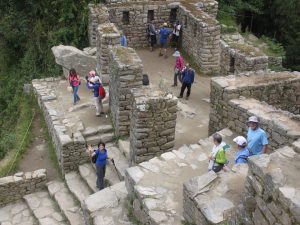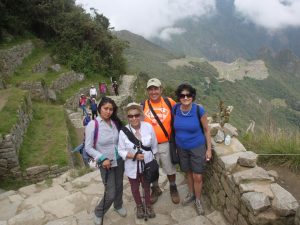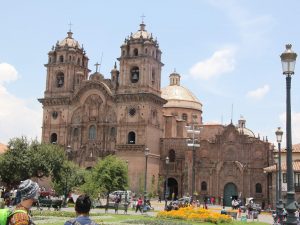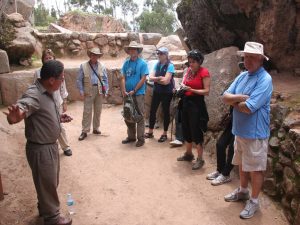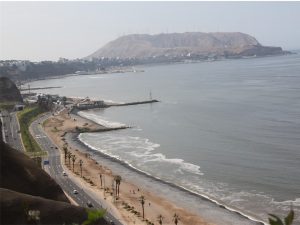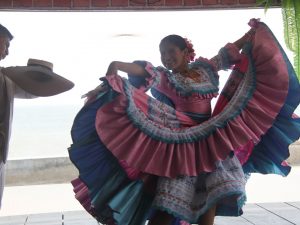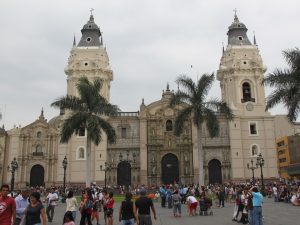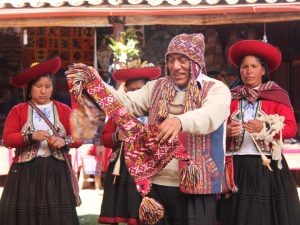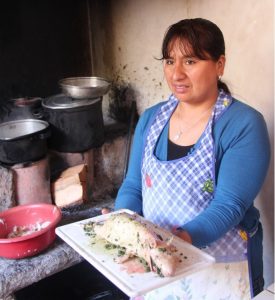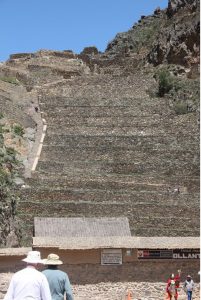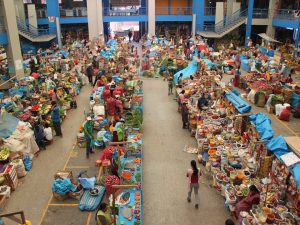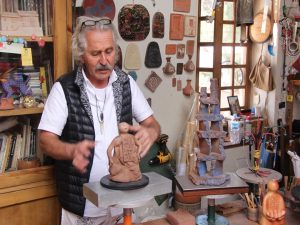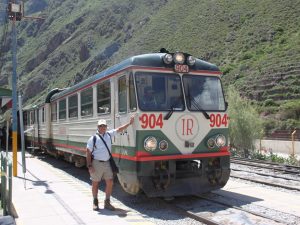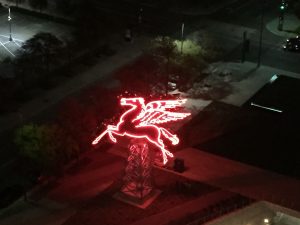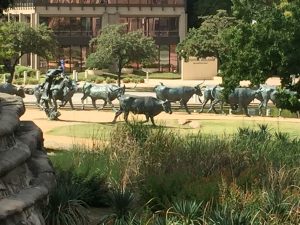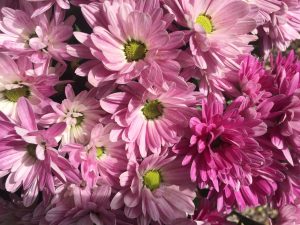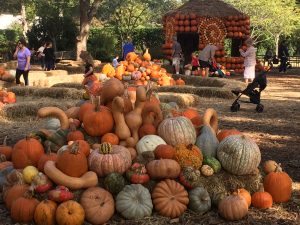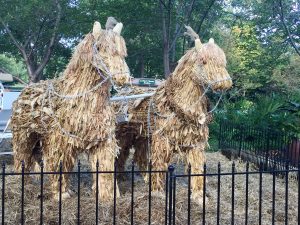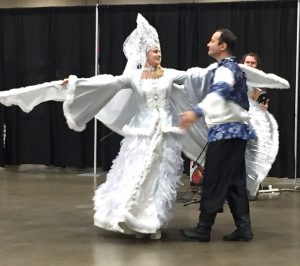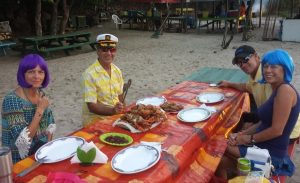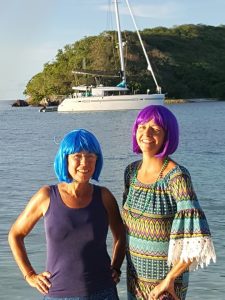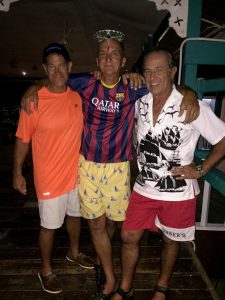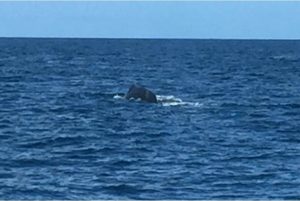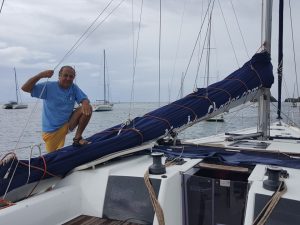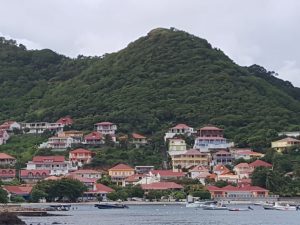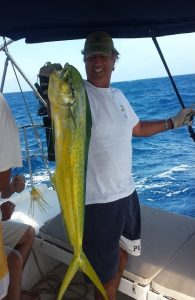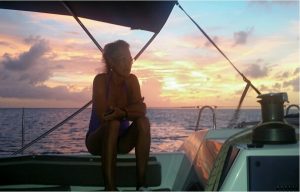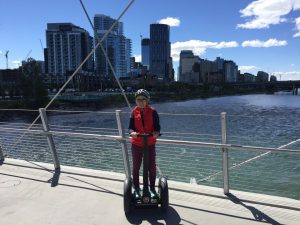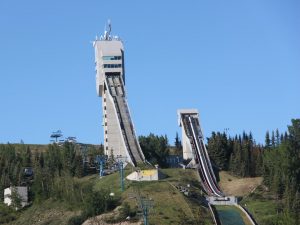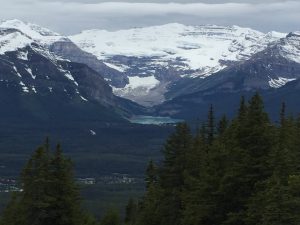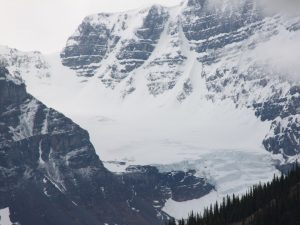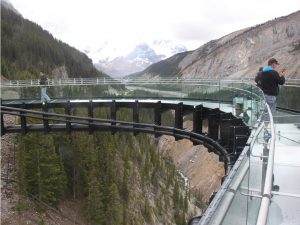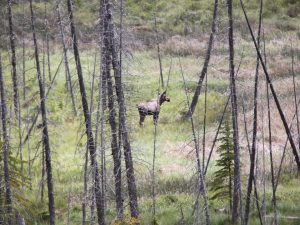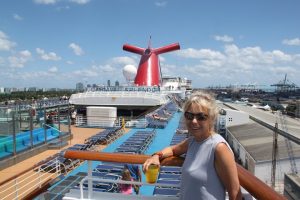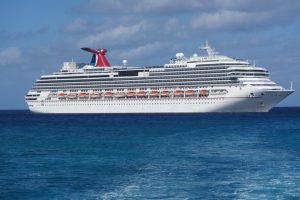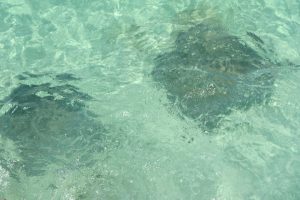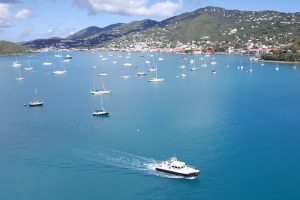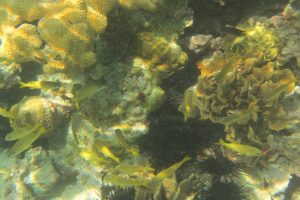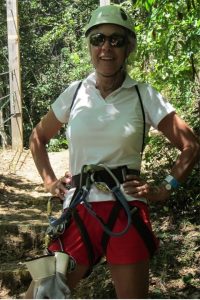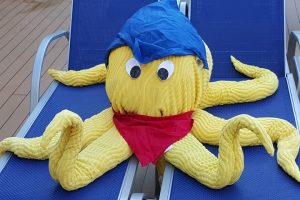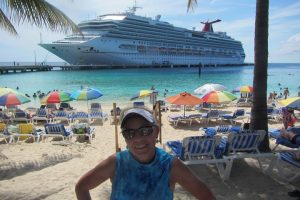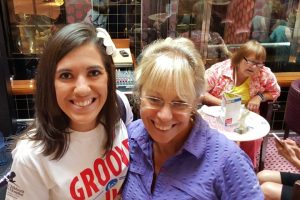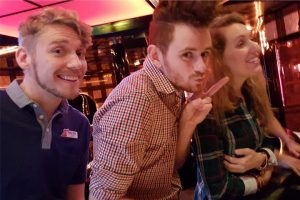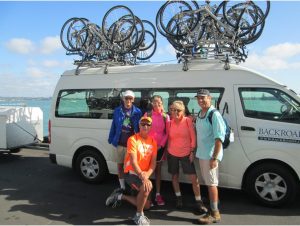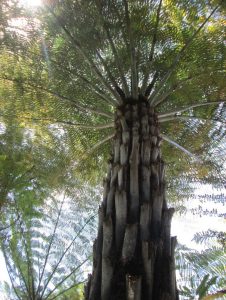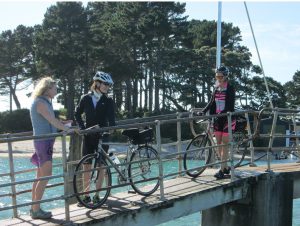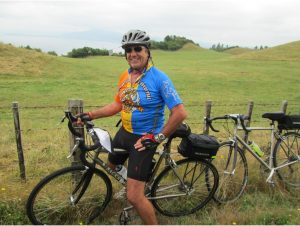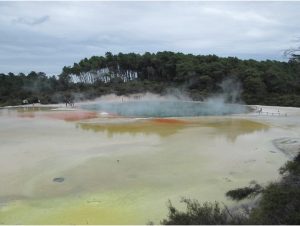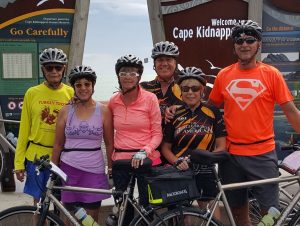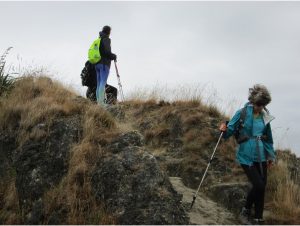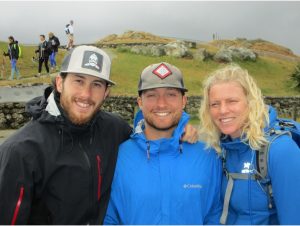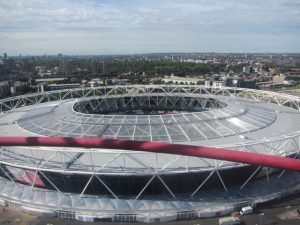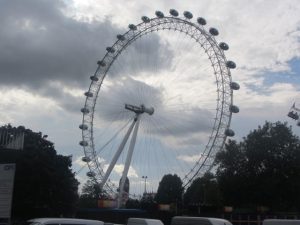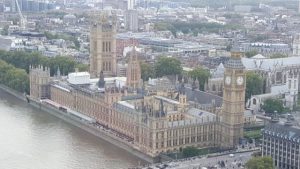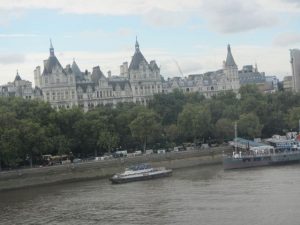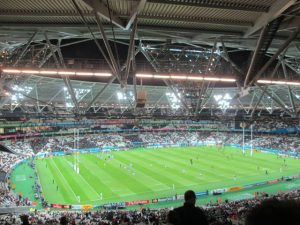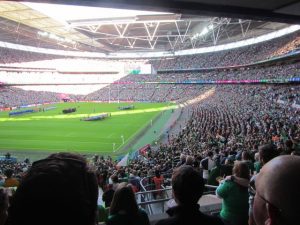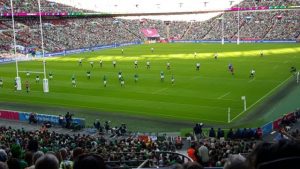It is Sunday morning, February 5th, 2017, and we have left our Peruvian Guide and traveled with our 11 other adventurer travelers from Cusco to Lima then on to Quito, Ecuador. Here, we are met by our new Country Guide, Louis. Louis is a certified Galapagos naturalist who was born and raised on the Galapagos Island of San Cristobal, where his family still owns and operates a farm. Louis is married with a daughter, and lives on the mainland in Ecuador’s largest city of Guayaquil. After collecting up our group, we head downtown to our hotel, The Mercure Alameda. From here, we have a few hours to explore the area, so a group of us walk down to Ejido Park where weekends are bustling with artists, food vendors and handicraft markets. Quito is Ecuador’s capital city and is a UNESCO World Heritage Site. It sits in a long, narrow valley, 30 miles long by 3 miles wide, between a number of active volcanos. After a “Welcome Dinner” in the hotel, we rush off to watch The Super Bowl and Lady Gaga’s spectacular halftime show – broadcast in English and in Spanish!
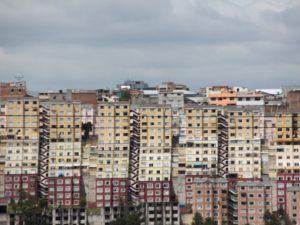
The next day, after breakfast, we go to a special school to watch, and participate, in a presentation by the Sinamune Disabled Children’s Orchestra. This Orchestra was founded by Maestro Edgar Palacios, a famed musician who gave up his personal career to lead this group. Since 2005, Grand Circle Tours had partnered with them to help support the group. They demonstrated tremendous musical ability in playing instruments, singing and dancing, and in their interaction with the audience. After the concert, we went to Quito’s historic section and saw La Basilica and toured the Plaza de La Independenzia. Here, under a winged-statue of Freedom, all sorts of activities were underway, including a march supporting a woman candidate in the soon-to-be Country’s elections. We entered the Presidential Palace and took pictures with the stoic Palace Guards, before walking further to San Francisco Square. Here we ate lunch at Hotel Casa Gangotena, a beautiful colonial residence turned boutique establishment. After lunch, we strolled and shopped on the narrow lane of La Ronda, before finally returning to the hotel and having dinner.
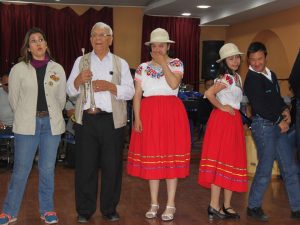

On Tuesday morning, we collected up just what we need for the next 5 days and traveled to the airport for the trip to the Galapagos Islands, located over 600 miles offshore Ecuador. Our flight was delayed, so we enjoyed lunch at the airport, and instead of flying via Guayaquil, we would fly directly to Baltra, Galapagos.
The Galapagos Islands were undiscovered until 1535 when Spaniard Fray Tomás de Berlanga, the fourth Bishop of Panama, sailed to Peru to settle a dispute between Francisco Pizarro and his lieutenants. De Berlanga’s vessel drifted off course, and his party reached the islands on 10 March. Until the early 19th century, the islands were used by English pirates who robbed Spanish galleons carrying gold and silver from South America to Spain. Throughout the 1700’s and 1800’s, the islands were a way-station for fleets of whaling vessels. They used the great Galapagos Tortoises as their main source on meat, since they would survive on-board for up to a year without food or water. This led to the extinction of some of the species, and near extinction of almost all the tortoises, until the widespread use of petroleum oil made whaling in these remote waters too expensive. Ecuador annexed the Galápagos Islands in 1832, and in 1835, the voyage of the Beagle brought the survey ship HMS Beagle, to the Galapagos with young naturalist, Charles Darwin, aboard. In the early 1900’s Ecuador tried repeatedly to sell the islands, but with their limited resources and remote access, there were no takers. In the 1920s and 1930s, a small wave of European settlers arrived in the islands, principally from Scandinavia, and settled in Floreana, San Cristobal and Santa Cruz, creating the core of the settlements that remain today. In the 1940’s, the USA paid a lease for a military base on the island of Baltra to aid in protecting the Panama Canal. In 1959, The Galápagos Islands became a national park, and tourism began in the 1960s.
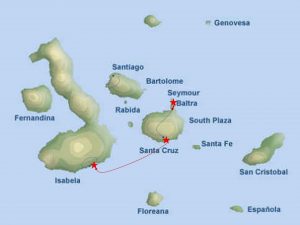
Upon landing at Baltra, one is struck by the landscape of nothing but volcanic rock with few scrubs and bushes. The airport is built upon the old USA military landing strip, and the base housing has long since been scavenged to their slabs. There is nothing actually on the island, so we immediate bus to the local ferry dock to transfer to the more populated island of Santa Cruz. Here we board a bus, and travel across the island to our ship waiting in Porto Ayora on the southern coast. Along the way, we travel through the area of Bellavista and Tunels de Lava where we stop to see Galapagos tortoises in a park in the wild, and walk 200 yards through an underground lava tunnel. The number of tortoises in this area were significant, since the adults travel up to these highlands during this season for food, the cool air, and mating. We saw a pair mating, and watched as another male chased-down a shy female before achieving success. Here, the males grow to 750 lbs. and the females to upwards of 400 lbs., with the females laying 10-15 eggs that hatch in about 4 months. When we arrive in Porto Ayora, we are greeted by sea lions lying about the dock. We boarded our ship’s 2 pangas, (inflatable zodiacs), and board our home for the next 5 days, a cabin cruiser with 9 cabins that can tour up to 16 passengers, named “Carina”. On board Carina, we occupy cabin #7, and have time to unpack before taking dinner in the dining room. The rooms are all air conditioned, and the boat is manned by a crew of 9. We pull anchor and get underway as soon as everyone is on board, as we will travel all night to our next destination, near Puerto Villamil, at the southern end of Isabela Island.
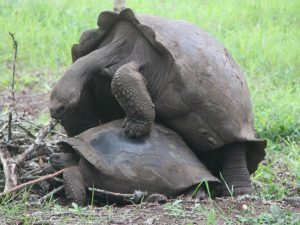
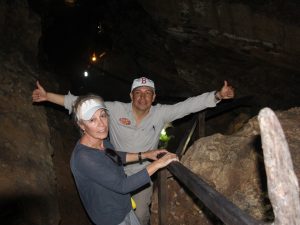
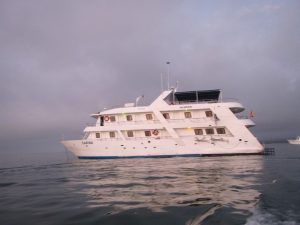
Because the heat of the day drives the land animals to rest at those times, we wake-up early and take a 6am pre-breakfast excursion via the pangas through the wetlands surrounding us. Along the way, we spot a Galapagos penguin, blue-footed boobies, marine iguanas, and bright-red sally-light-foot crabs. We make a dry-landing ashore where a nature trail through the rough volcanic rocks is maintained, and take a walk past nesting iguanas and resting sea lions. Along the way, we pass two large green sea turtles caught in the low-tide estuary waiting for high-tide to escape, and a colony of 100’s of marine iguanas all moving begrudgedly from our path. We return on-board for breakfast, and then leave again at 10am for our first snorkeling trip in a large estuary surrounded by mangroves. We are greeted at the snorkeling dock by the ever-present sea lions snoozing on the benches and steps. After making our way past them, we enter the underwater world of the Galapagos, and although the water is not Caribbean-clear in this estuary, it is warm – ~80 degrees Fahrenheit, and we still see lots of tropical reef fish, eagle stingrays, green sea turtles, white-tipped sharks and playful sea lions swimming among us.
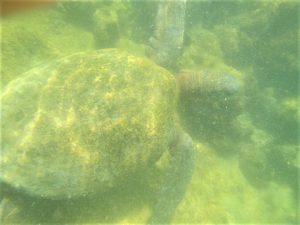
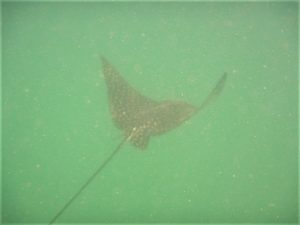
After an hour and a half of snorkeling, we head back to the boat for lunch and a brief rest, before leaving again in the afternoon to go back to the docks, but this time to catch a bus to go to the Charles Darwin Research Center Breeding Station, where we get to see Galapagos tortoises from each island, in captivity, including eggs and even a baby tortoise only one month old.
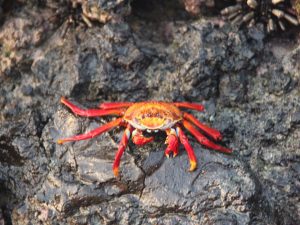

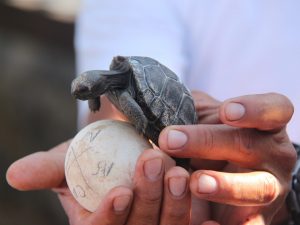
Next to the Center, is a nature walk through some of the island’s wetlands, among hundreds of Darwin finches, and past Flamingo Lake where pink flamingos sift for brine shrimp in the brackish waters. Finally, we emerge at the beach at the town of Puerto Villamil, where we take a casual stroll down the white sandy beach before stopping at a local beach-bar for a rum coconut, and finally boarding our panga for the ride back to the boat. Dinner is buffet style with an excellent assortment of vegetables, meats and fish, all expertly cooked by our onboard chef. As we finish dinner, the Carina hauls up anchor to begin our next overnight travel to tomorrow’s destination.

